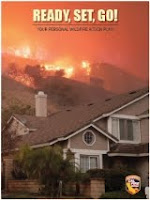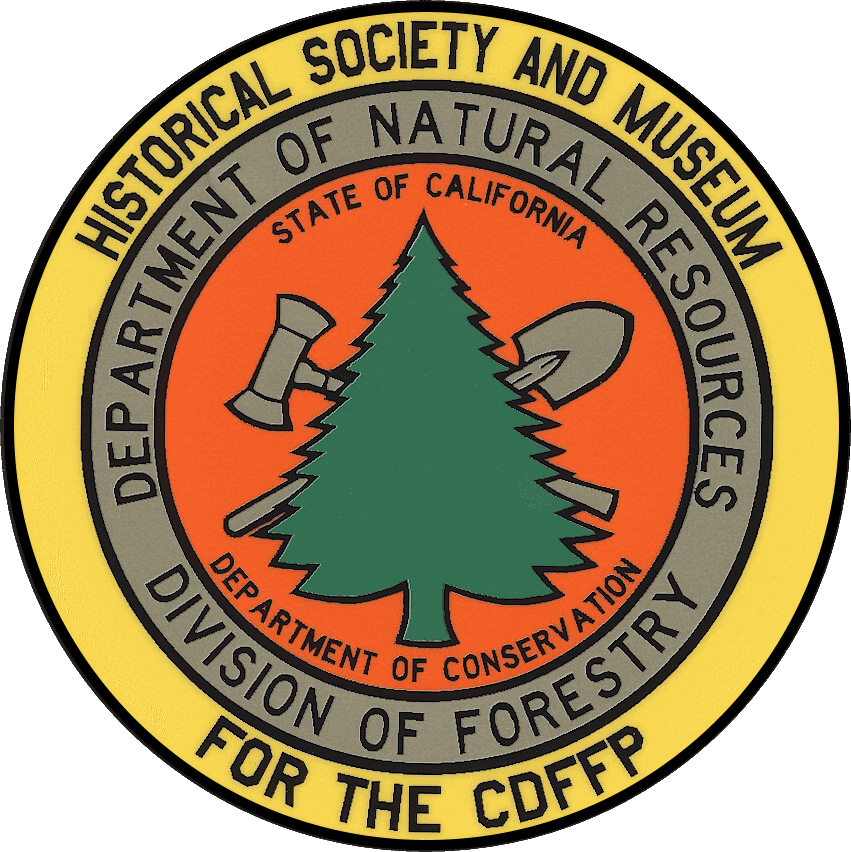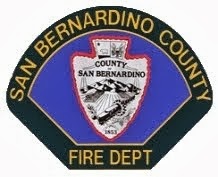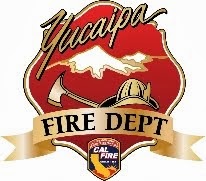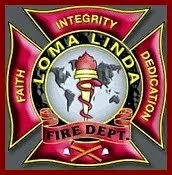Residents living in Inyo, Mono, and San Bernardino counties interested in a fire prevention program email jack.markle@fire.ca.gov
With the extremely cold weather, many people everywhere want to light up the fireplace or wood fueled heaters. But people who do this should take some precautions to ensure their safety and the safety of their loved ones.
With the cold wet weather, you may think that ashes that have cooled for several days are not a fire threat. They can be. The CAL FIRE San Bernardino Unit advises that when you remove ashes from your home, you first place them in a bucket with water to make sure that they are completely extinguished. At the very least, place the ashes in a metal trash can and cover with a metal lid. Plastic can melt if a fire ignites from the ashes allowing the flames to spread. You should also place the metal trash can away from the home, the eaves or any other overhang to prevent the structure from catching fire if flames ignite from the ashes.
CAL FIRE officials would also like to provide these cold weather safety tips to help you in keeping your home warm and safe;
Never use flammable liquids or excessive amounts of paper to start or accelerate a fire.
Charcoal gives off lethal amounts of carbon monoxide. Do not burn it indoors.
Keep flammables away from heat sources. Wood stoves require a 36-inch clearance from combustible surfaces.
The use of kerosene heaters inside the home is prohibited by California law.
Keep children away from heat sources.
Never leave a fire unattended.
Wood stoves should be UL approved and properly installed.
Never attempt to heat a structure with a device that was designed for outdoor use, such as a camp stove.
Have a professional inspect and clean your chimney, stovepipe and/or furnace annually. Do not attempt repairs yourself.
Keep a metal or glass screen in front of the fireplace opening. Make sure the damper is open before lighting.
Check furnace control and emergency shut-offs to be sure they are working properly.
Remember…be fire smart to stay fire safe.
In a matter of seconds, a life time of memories can go up in flames. Sadly, as we grow older, our risk of dying in a home fire increases dramatically. The CAL FIRE San Bernardino Unit wants to remind people aged 50 plus to please pay special attention to fire safety. According to the United States Fire Administration, “each year approximately 1,100 Americans ages 65 and older die as a result of a home fire.”
CAL FIRE San Bernardino Unit Chief Tim McClelland says “if elderly citizens take some simple precautions, they can dramatically reduce their risk of death or injury from fire.”
Smoke Safely: Careless smoking has been shown to be a major cause of fire deaths and injuries for people 65 years and older.
· Never smoke in bed.
· Put your cigarette or cigar out at the first sign of feeling drowsy while watching television or reading.
· Use deep ashtrays and put your cigarettes all the way out.
· Don’t walk away from lit cigarettes and other smoking materials.
Cook Safely: The kitchen can be a very dangerous place if you are not practicing fire safety. The USFA says “cooking is the third leading cause of fire deaths and the leading cause of injury among people ages 65 and older.”
· Never leave cooking unattended. A serious fire can start in just seconds.
· Always wear short or tight fitting sleeves when you cook. Keep towels, pot holders and curtains away from flames.
· Never use the range or oven to heat your home.
· Double-check the kitchen before you go to bed or leave the house.
Heat Safely: During these cool winter months, there are historically more home fires than any other time of the year. Heating devices like space heaters and wood stoves can make a home comfortable, but they should be used with extra caution according to CAL FIRE and the USFA. Heating is the second leading cause of fire deaths and third leading cause of injury to people 65 years of age and older.
· Keep fire in the fire place by making sure you have a fireplace screen large enough to catch flying sparks and rolling logs.
· Space heaters need space. Keep flammable materials as least three feet away from heaters.
· When purchasing a space heater, look for a control feature that automatically shuts off the power if the heater falls over.
Get Out Alive:
· Smoke Alarms: Install and maintain a smoke alarm on every level of your home, test the batteries every month and change the batteries at least once a year. A good idea is to replace the batteries with the spring and fall time changes.
· Carbon Monoxide Detectors: It’s the law in California that every residential home now have a Carbon Monoxide detector installed. Carbon monoxide (CO) is a colorless, odorless gas that is produced from heaters, fireplaces, furnaces and many types of appliances and cooking devices. Carbon Monoxide is a silent killer, each year claiming the lives of an average of 480 people and sending more than 20,000 people to emergency rooms across the nation.”
· Home Fire Escape Plan: Create and most importantly practice a fire escape plan regularly. At a minimum you should practice your escape plan twice a year. Make the time change weekend a fire safety and review weekend. Keep your exits clear of debris.
· Home Fire Sprinklers: If at all possible, install residential sprinklers in your home. Home fire sprinklers are a proven way to protect lives and property against fires at home.
CAL FIRE and your local fire department want you to be fire safe by practicing fire-safe behaviors when smoking, cooking and heating. Maintain your smoke alarms and carbon monoxide detectors and prepare and practice a home fire escape plan. For more suggestions on fire safety, you can go to www.fire.ca.gov
Are your babies and toddlers fire safe? Did you know that children under the age of 5 are twice as likely to die in a fire as the rest of us according to the United States Fire Administration? The Center for Disease Control and Prevention says that “on average, in the United States in 2010, someone died in a fire every 169 minutes and someone was injured every 30 minutes”. Every year thousands of children are killed or injured in home fires and 40 percent of them are under five years old. CAL FIRE San Bernardino Unit Chief Tim McClelland says “it’s very important to protect the smallest members of your family by making your home safer from fire and practicing fire safety at all times”.
The leading causes of fire related deaths for children under age 5 are matches, lighters, and other heat sources. In 1991 a four year old boy died when he ignited the family Christmas tree while playing with a cigarette lighter. September 2005, two young children six and two died when their apartment caught fire. They had been left alone. These are just a couple of tragic examples of young children dying in fires. “Many of these deaths are preventable” says Chief McClelland.
CAL FIRE, your local fire department and the United States Fire Administration have these suggestions:
· Store matches and lighters out of children’s reach and sight, preferably in a locked cabinet.
· Teach toddlers to tell you when they find a match or a lighter.
· Remember that even child-resistant lighters are not child-proof and store them safely.
· When a child is curious about fire or has been playing with fire, calmly and firmly explain that matches and lighters are tools for adults to use carefully.
· Never use matches or lighters as amusement. Your children may imitate you.
· Prevent fires by practicing and teaching fire safe behaviors in your home. Keep children 3 feet away from the stove when cooking, don’t overload outlets, and have your heating systems checked annually.
· If you smoke, use deep ashtrays and soak the ashes in water before throwing them away.
When you have babies and toddlers in the home, here are some additional fire survival suggestions:
· Keep a baby harness by the crib in case of emergencies. The harness, worn like a body brace, allows you to comfortably carry your baby and leave your hands free to escape the home.
· Keep your child’s bedroom door closed. If a hallway fire occurs, a closed door will hinder the smoke from overpowering your baby or toddler, giving firefighters extra time for rescue.
· Teach toddlers not to hide from firefighters. Uniforms can be scary in times of crisis. Teach children that firefighters are there to help in an emergency.
Cal FIRE wants you and your children to be fire safe. For more fire safe ideas, visit http://www.fire.ca.gov/
CAL FIRE is planning to continue the Lone Pine vegetation management burn projects located north of the community of Lone Pine if conditions are favorable to conduct the prescribed burn and within the burn parameters of the permits. The Lone Pine Fire Safe Council is funding this critical vegetation management project. The first of three units is located approximately two miles north of Lone Pine and east of Highway 395. The 395 unit is about 40-acres and was partially completed last week. Burning the remainder of this area is expected to be completed this week. CAL FIRE officials plan to conduct burning operations on Tuesday, Wednesday and maybe Thursday, February 7,8,9, 2012. If the first burn unit is completed, burning will begin on the second CAL FIRE burn project located just north of Narrow Gauge Road, and the third CAL FIRE project, immediately north of the Lone Pine airport. There are also several other burn projects planned by the Department of Water and Power and local land owners who lease DWP land. These projects have been approved by CAL FIRE who has issued the permits and has set the boundaries of what can be done.
These projects are necessary to reduce the over growth of vegetation that has occurred in that area. The reduction of the decadent vegetation will help in protecting the watershed while reducing the fire threat to Lone Pine.
During the burning, there will be smoke in the air, but part of the burn plan is to reduce the impact that the smoke might have on local communities. The burn program is subject to strict operational guidelines that must be met before the vegetation is ignited.
San Bernardino Unit Chief Tim McClelland administers the oath of office to newly promoted Division Chief Darren Feldman. Chief Feldman who has been the Administrative Officer for the San Bernardino Unit since 2006 was recently promoted from battalion Chief to Division Chief. He will remain in his Administrative Officer position. Division Chief Feldman is one of the longest serving Administrative Officers in CAL FIRE and has provided his expertise and support to three Unit Chiefs.

Chief Feldman began his career in 1984 as a paid call firefighter in the city of Highland. During his career, he has worked in city fire stations, wildland fire stations, and as a Captain at the Fenner Conservation Camp. From there he was promoted to Battalion Chief and assumed his duties as the Unit's Administrative Officer. Congratulations Chief Feldman!

